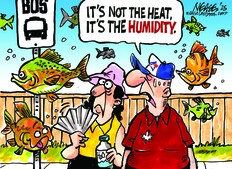Challenging winds were factor in Toronto air crash, flight instructor says
Newly-released video shows the aircraft landing hard before its starboard wing contacts the ground

Article content
OTTAWA — Tricky weather and pilot skill may be factors in Monday’s spectacular Toronto airliner crash, the Toronto Sun has learned.
Dario Matrundola, a Toronto-based professional pilot and flight instructor, said new video of the crash released Tuesday suggests the pilot was battling challenging wind conditions at Toronto Pearson International Airport during his Monday afternoon descent.
“When you come in with a crosswind like that you’ve got one wing low, you’re carrying a little bit more speed and your airplane is a little bit angled off,” Matrundola said.
“You should keep the plane straight with the runway, but your wing is low because you’re sliding into the crosswind.”
The plane — a 16-year-old Bombardier CRJ-900 operated by Delta’s regional subsidiary Endeavour Air — was attempting to land on Runway 23.
As runways are numbered according to their relative angle from 0 degrees north, Runway 23 at YYZ sits on a compass heading of 230 degrees.
Air traffic control informed landing aircraft to expect 33 knot (61 km/h) gusts from 270 degrees — a 50-degree angle from the direction of the runway.
They were also warned of “side bumping” upon landing, which Matrundola said suggests could’ve been a warning about wake turbulence whipped up by previously-landing aircraft.
In those conditions, he said, a CRJ-900 wingtip can get pretty close to the ground.
“Any pilot who’ve flown that aircraft will tell you the same thing,” Matrundola said. “That depends on the skill of the pilot.
“For a junior pilot, maybe they’re comfortable with the 25 knot direct crosswind, but maybe with a senior pilot, they’re good with 30.”
Video posted online, shot from the cockpit of an aircraft on the ground, depicted a hard landing and a slight roll to starboard — suggesting the pilot didn’t get a chance to flare the aircraft prior to touching down.
Pilots are trained to lift the nose of the plane as its touching down, to decrease speed and to ensure the rear landing wheels touch the ground first
“If you land on the nose, you’re going to crash,” Matrundola said.
“They didn’t seem to flare. The wing was low because of the crosswind, they were fighting the crosswind, so that means the wing hit and the wing cartwheeled the airplane. They were lucky nobody died in a case like that, normally most people die, so they’re very, very lucky.”











Postmedia is committed to maintaining a lively but civil forum for discussion. Please keep comments relevant and respectful. Comments may take up to an hour to appear on the site. You will receive an email if there is a reply to your comment, an update to a thread you follow or if a user you follow comments. Visit our Community Guidelines for more information.